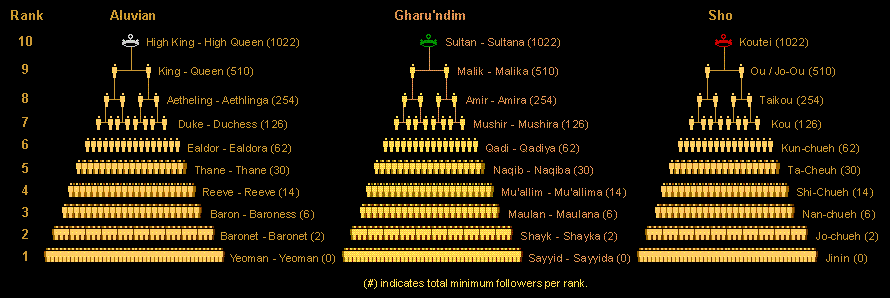Allegiance Rank: Difference between revisions
mNo edit summary |
(minor rewording for clarification (additional editing appears to be needed)) |
||
| Line 1: | Line 1: | ||
A player's allegiance rank is a function of the number of [[Vassal | vassals]] and how they are organized. First, take the two highest ranked vassals. Now the [[Patron | patron's]] rank will either be one higher than the lower of the two or equal to the highest rank vassal, whichever is greater. For example, a patron | A player's allegiance rank is a function of the number of [[Vassal | vassals]] and how they are organized. First, take the two highest ranked vassals. Now the [[Patron | patron's]] rank will either be one higher than the lower of the two or equal to the highest rank vassal, whichever is greater. For example, if a patron has two vassals and one is rank 5 and the other is rank 7, the patron's rank will be rank 7, and if both vassals were rank 3 instead, the patron's rank would be rank 4. | ||
Loot items can have an allegiance rank requirement to activate the spells. | Loot items can have an allegiance rank requirement to activate the spells. | ||
Revision as of 15:23, 15 May 2009
A player's allegiance rank is a function of the number of vassals and how they are organized. First, take the two highest ranked vassals. Now the patron's rank will either be one higher than the lower of the two or equal to the highest rank vassal, whichever is greater. For example, if a patron has two vassals and one is rank 5 and the other is rank 7, the patron's rank will be rank 7, and if both vassals were rank 3 instead, the patron's rank would be rank 4.
Loot items can have an allegiance rank requirement to activate the spells.
Below is the minimum number of followers for a given rank (many more will be required if not organized optimally).
There is a quest crown that raises rank by 1 for item activation purposes, but does not affect the player's rank title.
